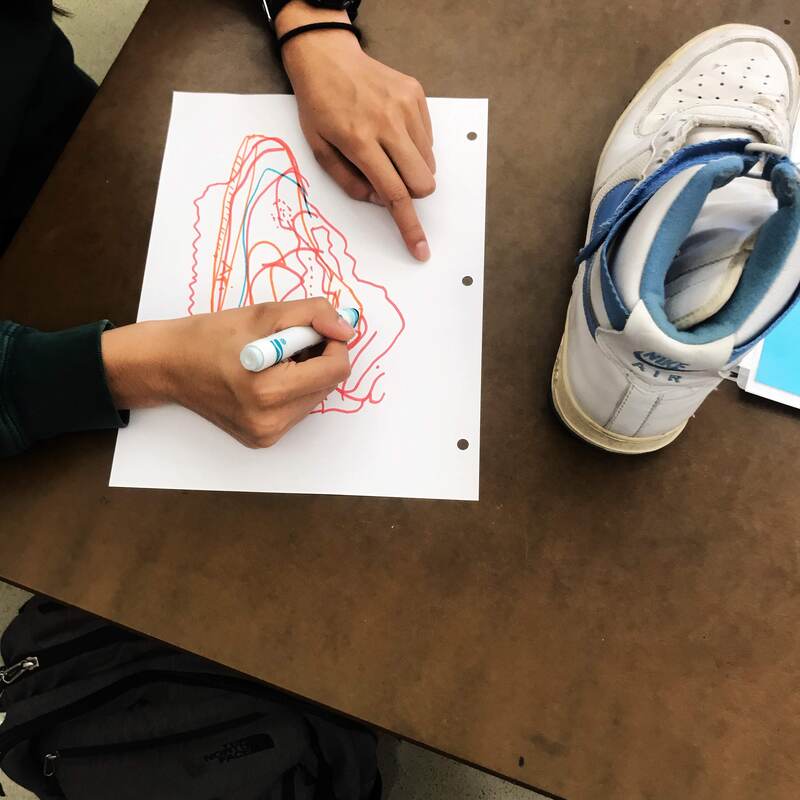Contour Shoe Drawings for BeginnersContour drawing is a foundational lesson in any drawing curriculum and I get excited to teach how make a contour drawing each year. I begin with a group pure contour (no looking at the paper) exercise where students create collaborative layered drawings. From there students create continuous line drawings (no lifting the drawing tool) and finally work on contour drawings where they can both look at their paper and lift up their pencils. Group Contour Drawing ActivityThe group pure contour drawing exercise is a fun way to start off this unit. I set out shoes on each of the tables - one per student. Then students set up a blank page their sketchbooks in front of the shoes. I have students use Crayola markers for this exercise because they cannot be erased and because they glide smoothly over the paper. Before students begin I do a demonstration of a blind contour of one of the shoes and explain the activity. I think it is really helpful to see me do a pure contour and to see it come out distorted (because they know I can draw quite realistically) and to know if theirs comes out distorted they are still doing it right. For the activity each student draws the shoe at their seat for 1-2 min no looking at the paper, then when the time is up they get up and move to the seat to their right. They bring only the marker with them. Then they begin drawing the next shoe right on top of the drawing done by the person before. The drawings come out very interesting and are a record of what each person observed in the shoe. Following this activity we discuss what the experiences were for students and the challenges they faced not being able to look at the paper and having to draw overtop their classmates work. Then students select the shoe they want to do a longer drawing of (they can choose their own shoes) and we do a continuous line contour for up to 5 min and then a regular contour drawing for the remainder of the class 35-40 min. Above are some examples from students of varying skill levels. I like this lesson because shoes are engaging subjects and have so many lines and details to observe. My students of all skill and experience levels have success with this lesson.
0 Comments
Leave a Reply. |
AuthorI'm a high school/middle school art teacher with 16 years of experience. I'm here to help art teachers free up more time and space in their lives through lesson ideas and ready to go content rich, engaging curriculum. Categories
Syllabus Planning
Sketchbook Covers First Day of School Avoid Teacher Burnout Digital Self Portraits Surrealist Techniques Features of the Face Bilateral Mirror Activity Gees Bend Art Lesson Arts Assessment Favorite Fall Lessons Chicano Artists Art Materials Guide IB Process Portfolio What is Art? Pattern Design Figure Drawing |












 RSS Feed
RSS Feed
